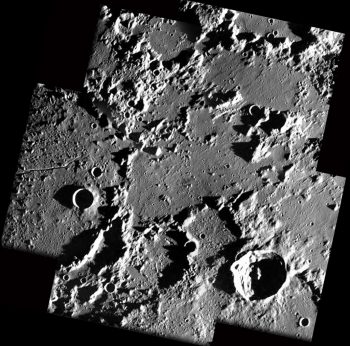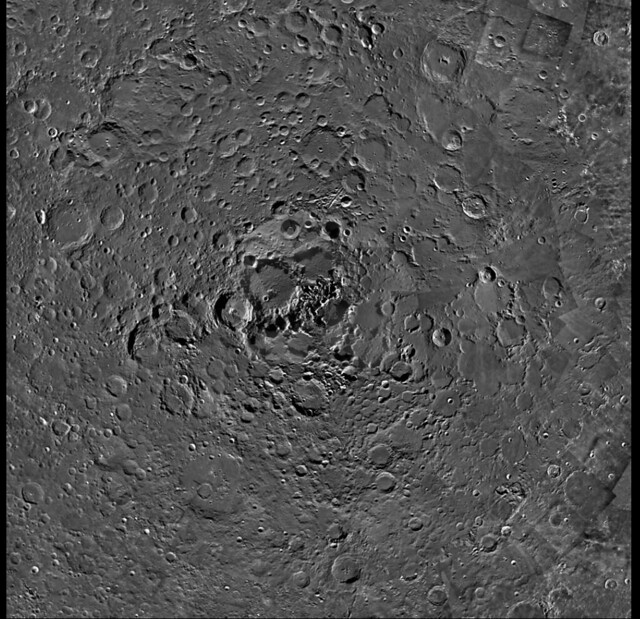
Mayer and Bond craters seen by SMART-1. Credit: ESA/Space Exploration Institute (2006), CC BY-SA 3.0 IGO
“Testing solar-electric propulsion and other deep-space technologies, and making lunar scientific investigations”
In a nutshell, this is what ESA’s SMART-1 mission was about. Launched on 27 September 2003, it traveled to the Moon using ion propulsion, carrying a number of miniaturised instruments. Besides testing new technology, SMART-1 did the first comprehensive inventory of key chemical elements in the lunar surface. It also investigated the theory that the Moon was formed following the violent collision of a smaller planet with Earth and looked for water in the form of ice. After SMART-1 concluded lunar orbit science operations, its mission ended by a controlled lunar impact on 3 September 2006.
SMART-1 was the first European spacecraft to travel to and orbit around the Moon, SMART standing for Small Missions for Advanced Research in Technology. This was the first time ion propulsion has been used to leave Earth’s orbit.
Today, we are happy to re-release the legacy of more than 100 images of the mission under a Creative Commons CC BY-SA 3.0 IGO licence, with the kind support of ESA Senior Scientist and former SMART-1 project scientist Bernard Foing, who adds:
“ESA’s SMART-1 small technology mission was an inspiring European journey to the Moon, where we invited many international collaborations. SMART-1 open data and images can now be used further by the world’s scientists explorers, engineers as well as the community of students and citizens to prepare the next steps for the MoonVillage.”
Assets:
- View and download all images here.
- SMART-1 data is available at ESA’s planetary science archive (check SMART-1 in left column and click search button).
- An updated SMART-1 summary and a list of top 10 firsts
- List of publications
- SMART-1 legacy mission pages


Discussion: no comments